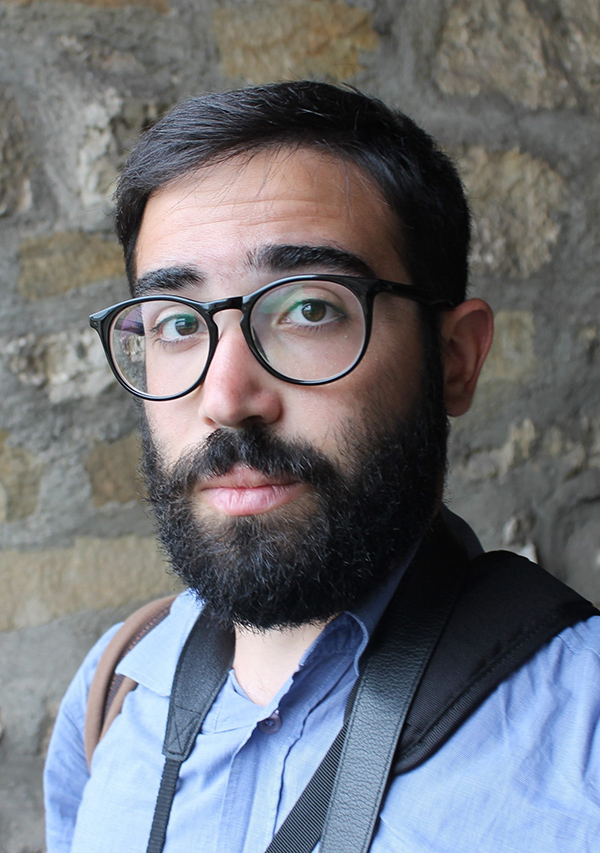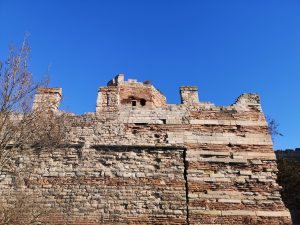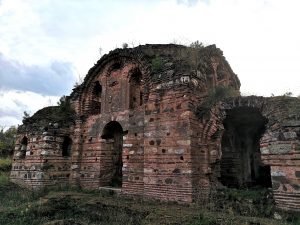
Fellow’s End of the Academic Year Research Report:
Translating Chivalry: The Ethics and Aesthetics of Warfare in the Age of the Komnenoi (1081–1204)
During my time at ANAMED as a PhD fellow (2021–2022), I had the precious opportunity to see and experience key monuments, visit collections, access rare academic books and articles, and—perhaps most importantly—discuss both my findings and larger methodological questions with a group of curious and brilliant scholars. All of the above contributed to significantly advancing (and enhancing) my project, tentatively titled “Translating Chivalry: The Ethics and Aesthetics of Warfare in the Age of the Komnenoi (1081–1204),” which constituted my main target throughout the academic year.
My dissertation explores the cross-pollination of strategies for aristocratic self-representation adopted across the twelfth-century Mediterranean and the widespread reframing of visual and literary discourse to proclaim martial values. I focus principally on the Byzantine Empire and its relationship with its Christian neighbors: Latins (in Europe and the Crusader States), as well as Georgians, Southern Slavs, and Rus, but I also consider its relations with the Muslim Seljuks of Anatolia. The current scholarly narrative according to which the adoption of knightly customs and accoutrements in the Levant was at best a pale approximation of European chivalric codes, I argue, requires revision. To regard “chivalry” as a Western cultural export is misleading: visual forms, including heraldic devices, emerged simultaneously across the region. Drawing on an array of material artifacts and visual renditions of military personae, and analyzing contemporary evocations of militaristic exploits and entertainments, I contend that Byzantium played a dominant role in the definition of the values and tastes that came to be adopted by the nobility across political, and even confessional, boundaries. Ultimately, my goal is to shed light on Byzantium’s contribution to the ethics and aesthetics of warfare and the place of chivalric codes in the collective imagination of the Mediterranean aristocracy.

Fig. 1. “Manuel’s Wall” at Blachernae (Carlo Berardi).
Hence, I treasured the chance to spend a year in Istanbul, the former capital of the Byzantine Empire and repository of many monuments and portable objects directly related to the patronage of the Komnenian dynasty. The exploration of the remnants of Constantinople, and especially the in-person surveys of buildings such as “Manuel’s Wall” at Blachernae (Fig. 1) and the Pantokrator Monastery (Zeyrek Camii), added a new dimension to my understanding of twelfth-century architecture and imperial patronage. Similarly, the outstanding Byzantine collections of Istanbul’s Archaeological Museum (although only partially open to visitors) and the fascinating Seljuk objects exhibited at the Museum for Islamic and Turkish Art provided me with plentiful comparanda for my selected case studies. Additionally, I had the opportunity to visit the Byzantine exhibition held at the Pera Museum (Nov. 23, 2021–Mar. 13, 2022), together with the curator and other scholars, and even to take part in a field trip to Trilye organized by Koç University, which allowed me both to visit lesser-known Komnenian monuments, such as Hagios Aberkios (Fig. 2), and to interact with the students, whose enthusiasm and intelligent questions led me to prepare a short presentation, which I subsequently shared with them on campus.

Fig. 2. Hagios Aberkios (Carlo Berardi).
In the meantime, I kept working on one of my chapters, dealing with the maturation of the chivalric aesthetic in the latter half of the twelfth century, and submitted a draft for a related article (still unpublished as of April 2022) centered around the precocious appearance of heraldic emblems in the church of St. Panteleimon at Nerezi in North Macedonia. The paper, provisionally titled “Brave as a Lion, Fierce like a Griffin. Heraldic Devices and Aristocratic Identity in the Frescoes of St. Panteleimon, Nerezi,” argues that the adoption of heraldic practices by the upper echelons of Komnenian aristocracy (the frescoes at Nerezi were commissioned by Alexios Angelos Komnenos, the ruling emperor’s cousin) is nearly contemporary to the codification of armorial devices in Western Europe and thus should not be merely regarded as a cultural import but investigated first as a relevant chapter in the development of heraldry, and chivalric culture as a whole, and second as an expression of the mutated aspirations and representational strategies of the military elites in Byzantium.
As part of my work on a different chapter, whose focus lies on the interaction between the new martial values of the aristocracy and the classical tradition, I have also presented a paper at the 24th International Graduate Conference of the Oxford University Byzantine Society (OUBS), entitled “Old Tales Told Anew: Homeric Heroes and Komnenian Ideals in the Illustrations of the Marciana Iliad,” which was later selected for publication in the conference proceedings and will appear in an edited volume, most likely in 2024. The talk centered on the illustrations added to the codex Venetus A (Marc. Graec. Z 454), the oldest extant manuscript of the Iliad, at some point in the mid-twelfth century. These miniatures precede the text of the Iliad proper, both physically and narratively, as they depict events that occurred before the beginning of the poem. I argued that the selection and sequence of the episodes, together with the use of twelfth-century garb and material culture in association with the characters, reflect the evolving relationship between the Byzantine elites and the Homeric tradition, which was “updated” to better conform to the realities of contemporary warfare, on one hand, and to incorporate new courtly ideals, on the other. These efforts are mirrored in the works of twelfth-century intellectuals, such as John Tzetzes and Constantine Manasses, who were tasked with expounding, re-elaborating, and sometimes actively rewriting the Iliad to cater to the changing expectations of the Komnenian audiences. By underscoring the many similarities shared between these texts and the Marciana Iliad’s miniatures, I showed how the Komnenian elites re-imagined the Homeric epos through the lenses of different genres, such as the romance, and archetypes, such as that of the mounted warrior.
Many of these ideas could not have been developed and conceptualized in this form without the stimulus provided by the cross-disciplinary discussions that I had with the other fellows, both informally and in the semi-formal setting of the weekly ANAMED talks, the conversations that I had with other Byzantinists at the Swedish Institute (facilitated and encouraged by Koç University faculty), or the consultation of the center’s well-provisioned library. The constant feedback from my peers and senior scholars, and ANAMED’s conducive work environment, also contributed to me being awarded the M. Alison Frantz Fellowship by the American School of Classical Studies in Athens for 2022–2023. In conclusion, my stay in Istanbul proved to be fruitful and enjoyable, despite the looming presence of the Covid-19 pandemic, and constituted an essential step towards the completion of my dissertation.
Diğer Araştırmacı Raporları




